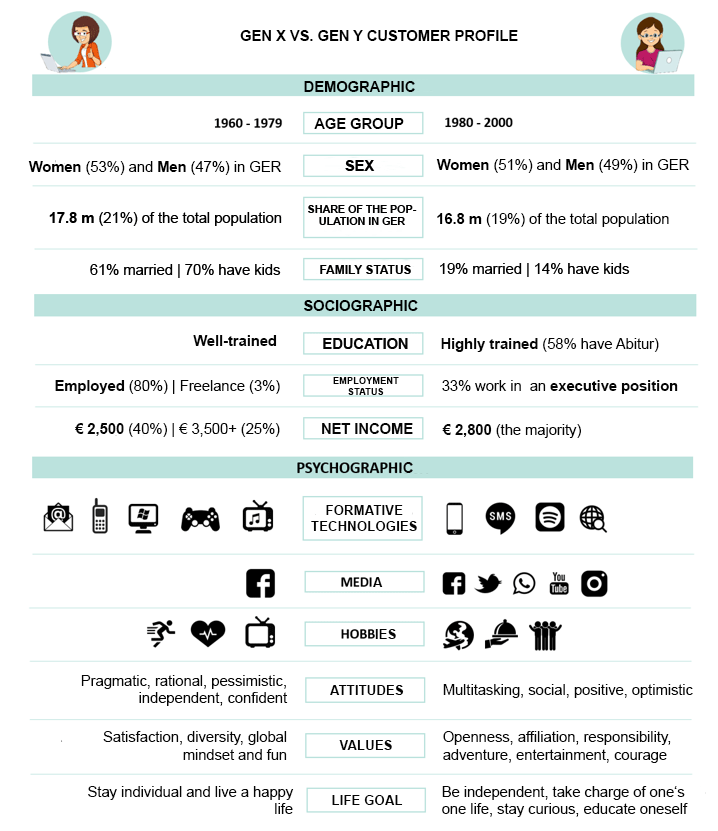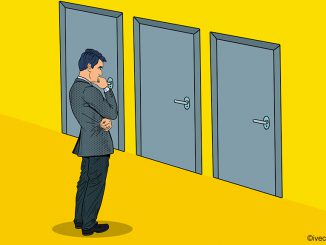
How Do Online Shops Convey Feelings in a Digital World?
“The world is becoming more and more digital, still humans remain emotional.”[i] Digitization does no longer just change the way in which customers inform themselves about a product or acquire it, but also how they make purchase decisions. In view of today’s immense number of offers and countless online shops, customers no longer make their decisions solely based on rational product arguments, but instead on the basis of emotional product experience because emotions remain the decisive drivers of economic action.[ii] Fashion online retailing usually makes it more difficult to convey sensual impressions and emotions because human senses in a virtual environment cannot be stimulated to the same extent as in the real world.[iii]
MBS graduate Lena von Linde has analyzed precisely this topic in her Bachelor thesis, and she has examined whether an emotional address in fashion online shops leads to an increased experience of positive emotions, and increases purchasing power – taking into account the progression of the digital age, current trends as well as the changing consumer behaviors of Generation X and Generation Y members. The basic questions were the following ones:
- Which emotions can be measured for Gen X and Gen Y members for selected elements in a fashion online shop?
- How do Gen X and Gen Y members react to an emotional address in an online shop?
- Does the triggering of emotions in an online shop have a positive influence on the purchase decision of Gen X and Gen Y members?
The paper was authored in cooperation with fashion online retailer mytheresa.com GmbH. By now, Lena von Linde is a Junior IT Project Manager at the company – making a great example for a successful career start that is not uncommon for MBS graduates: They get in touch with a company by doing their theses or internships, establish professional networks, prove their expertise, and then receive a job offer. As part of her Bachelor studies, Lena von Linde did internships at Versicherungskammer Bayern, Ningbo Swell Industry Co. Ltd. in China, and mytheresa.com GmbH. In addition, she spent her semester abroad at Hong Kong University, and was also awarded the MBS Special Award for outstanding dedication and commitment during her studies.
Megatrends Influence the Fashion Industry
The fashion industry is not only confronted with rapidly changing fashion trends, but is also affected by long-term megatrends. Megatrends make sure that, in the long run, new lifestyles, consumption patterns, needs and values emerge. Buzzwords are, for example, digitization, health, globalization, or demographic change.[iv] Digitization is the driving force, shifting the purchase of fashion into the digital world. However, fashion e-commerce has so far been very technical; there is no face-to-face contact, it is not possible to try on the clothes, and generally it is neither possible to order them custom-made.[v] There are three other megatrends that influence fashion e-commerce: connectivity, individuality, and sharing economy. Sub-trends such as augmented reality, social shopping, rent-the-runway and 3D fashion-printing are derived from these megatrends. Those sub-trends have an impact on today’s customers’ needs, such as having a personal shopping experience or trying on clothes online.
How to Selectively Convey Emotions in Fashion E-Commerce
According to emotion psychologist C. E. Izard (1994), there are ten basic emotions, known as the “Differential Emotions Scale (DES)”, which are recognized and expressed by all people in the same way across cultures: interest, distress, disgust, enjoyment, anger, surprise, shame, fear, contempt, and guilt. All other emotions result from mixing the basic emotion.
Emotions during (online as well as offline) shopping are generally influenced by parameters such as the situation, the characteristics of the person, and the perceived design of the shop.[vi]
Four studies selected in the Bachelor thesis analyze the topic of emotion research in e-commerce from different psychological perspectives:
- quality of the website (e. g. wealth of information, visual stimuli, colors)[vii]
- persuasive personalization (e. g. generating specific attention states of information processing on the customer’s side)[viii]
- social presence (e. g. pictures)[ix]
- storytelling (e. g. videos, product descriptions)[x]
The studies show that the more positive emotions arise during the shopping process, the more time customers spend in the shop, and the more money is spent.[xi] Positive emotions also improve cognitions about the product or service, and ensure that users process information more quickly and decide to buy more quickly.[xii] They also might result in customers less likely to evaluate the risks of their decisions, resulting in more impulsive purchases.[xiii] Nevertheless, it is not exclusively positive emotions that are utilized to prompt customers to purchase a product. “Anger” about chemical additives in clothing fabrics or the exploitation of seamstresses, for example, makes customers consume in a more sustainable way.[xiv] However, it is not necessarily the exact same set of emotions that is triggered in different people: What may cause joy in one person may cause trouble in another.[xv] In addition, creating emotions in an online shop is expensive, because emotions need more than just text and images.[xvi]
There Is a Difference Between Generations X and Y
Particularly interesting in this context are possible differences between the different generations. In the case of Lena von Linde’s Bachelor thesis, members of Generation X (born between 1960 and 1979) and Generation Y (born between 1980 and 2000) were systematically considered because of their high purchasing power on the Internet and their large proportion of the total population in Germany. The following figure shows an exemplary overview of the different customer profiles of these generations.
Generation X members only came into contact with the Internet as recently as in the course of their lives. Although the use of the Internet had to be learned first, they are familiar with the Internet and use it regularly. For them, online shopping is a means to an end, either for convenience or because of monetary advantages. Generation X members purchase mainly via desktop computers and are addressed via newsletters, reviews and/or search engines (e. g. Google). Generation Y members are the first to grow up with the new technologies of the digital age. The Internet is their everyday companion, and they are very consumer-oriented and sophisticated in terms of online shopping. Generation Y members purchase mainly from desktop computers and smartphones, and are addressed via social networks (e. g. Instagram) or Google.[xvii]
The practical part of the paper – a study in which 221 Generation X and 343 Generation Y members were surveyed – set in exactly at this point: It revealed that Gen X and Gen Y members feel emotions when visiting an online shop. For Generation X members, an emotional address in an online shop evokes positive emotions, but at the same time also neutral and negative ones. They respond most positively to design, images, and coloring, and make their purchase decisions based on rational product arguments. Nevertheless, Generation X members are more likely to be tempted to buy in an emotionally designed online shop than in a non-emotional one. On the other hand, it has been found that Generation Y members sense vastly positive emotions in an online shop that addresses emotions. Generation Y members respond most emotionally positive to images, design and descriptions, and make their purchase decisions on the basis of an emotional product experience, can be tempted to buy by an emotional approach, and hardly react to a non-emotional approach.
[i] Jost, S. (2015). Congress lecture at: BTE-Kongress Fashion-Emotion 3.0: Emotionalisierung des Modehandels in einer digitalen Welt, Köln. Retrieved from: http://www.handelsverband-nrw.de/wp-content/uploads/2015/05/Folder_-Fashion-Emotion-3.0_digital.pdf (as of Dec 28, 2016).
[ii] Ternès, A., Towers, I., & Jerusel, M. (2015). Konsumentenverhalten im Zeitalter der Digitalisierung: Trends: E-Commerce, M-Commerce und Connected Retail. Wiesbaden: Springer-Verlag.
[iii] Kilian, T. & Langner, S. (2010). Online-Kommunikation – Kunden zielsicher verführen und beeinflussen. Wiesbaden: Gabler Verlag.
[iv] NAISBITT, J. (1984): Megatrends. 10 Perspektiven die unser Leben verändern werden. Bayreuth: Hestia Verlag.
[v] Leisenberg (2014). Emotional Commerce – Differenzierung und Kundenbindung auf Gefühlsebene. Retrieved from: http://www.leisenberg.info/2014/08/31/emotional-commerce-differenzierung-und-kundenbindung-auf-gefuehlsebene (as of Jan 12, 2017).
[vi] EResult (2009). Drei Dinge auf einmal – gut bedienbar, nützlich, erlebnisreich – nötig, machbar, sinnvoll? Retrieved from: http://www.eresult.de/fileadmin/Downloads/downloads/OMS%20CAP%20SES%202012%2010%20Berlin%20eResult.pdf (as of Jan 8, 2017).
[vii] Éthier, J., Hadaya, P., Talbot, J., & Cadieux, J. (2006). B2C web site quality and emotions during online shopping episodes: An empirical study. Information & Management, No. 43(5). [viii] Saari, T., Ravaja, N., Laarni, J., Turpeinen, M. & Kallinen, K. (2004). Psychologically targeted persuasive advertising and product information in e-commerce. In: Proceedings of the 6th international conference on Electronic commerce. ACM.
[ix] Hassanein, K., & Head, M. (2007). Manipulating perceived social presence through the web interface and its impact on attitude towards online shopping. International Journal of Human-Computer Studies, No. 65(8).
[x] Huck-Sandhu, S. (2014). Corporate Messages entwickeln und steuern: Agenda Setting, Framing, Storytelling. In: Zerfaß, A. & Piwinger, M. (Hrsg.): Handbuch Unternehmenskommunikation. Strategie. Management. Wertschöpfung (2nd ed.). Wiesbaden.
[xi] Jones, M.A. (1999). Entertaining shopping experiences – an exploratory investigation. Journal of Retailing and Consumer Services. No. 6.
[xii] Lynch, P.D., Kent, R.J. & Srinivasan, S.S. (2001). The global internet shopper: Evidence from shopping tasks in twelve countries. Journal of Advertising Research. No. 41.
[xiii] Isen, A.M. (2000). Positive affect and decision making. In Lewis, M., & Haviland-Jones, J.M. (Eds.), Handbook of emotions (2nd ed.). New York, USA: Guilford. Press.
[xiv] Grötsch, C. (2014). Viele Wege führen zur Emotionalen Kundenansprache. Retrieved from: http://www.handelskraft.de/2014/03/viele-wege-fuhren-zur-emotionalen-kundenansprache/ (as of Jan 08, 2017).
[xv] Mau, G. (2009). Die Bedeutung der Emotionen beim Besuch von Onlineshops. Wiesbaden: Springer Fachmedien.
[xvi] Pispers, R. & Dabrowski, J. (2011). Neuromarketing im Internet: erfolgreiche und gehirngerechte Kundenansprache im E-Commerce. Planegg: Haufe-Lexware.
[xvii] Lissitsa, S. & Kol, O. (2016). Generation X vs. Generation Y – A decade of online shopping. Elsevier. Journal of Retailing and Consumer Services.







